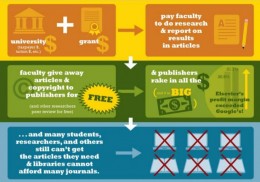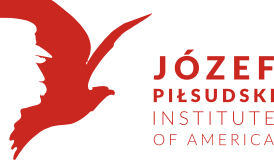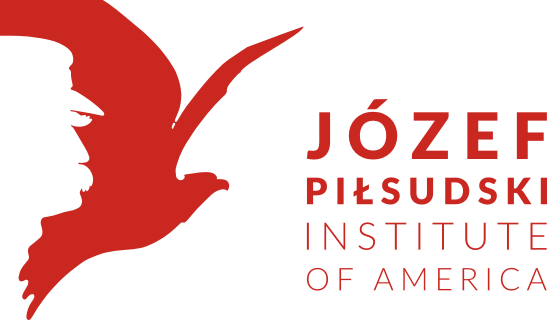The 2015 Annual Conference of the Metropolitan New York Library Council
 The slide entitled “What is the Problem” by Jill Cirasella, Associate Librarian for Public Services and Scholarly Communication at The Graduate Center, CUNY, published using the CC-BY licence
The slide entitled “What is the Problem” by Jill Cirasella, Associate Librarian for Public Services and Scholarly Communication at The Graduate Center, CUNY, published using the CC-BY licence
On Thursday, Jan 15, 2015 we took part in the Annual Conference of the Metropolitan New York Library Council, popularly called the METRO. The annual conference is always worth attending, since METRO associates individuals and organizations very advanced in modern thinking about libraries, archives and museums. This year was no exception, and we had a chance to learn about new achievements and ideas including the latest in digital technologies.
The Keynote speaker was Professor Siva Vaidhayathan from the University of Virginia, excellent speaker and author of many books including “Copyrights and Copywrongs: The rise of if Intellectual Property and How it Threatens the Creativity” and “The Googlization of Everything and Why We Should Worry”. He presented a slightly apocalyptic image of the present and his predictions for the next 10 years, where the “Internet” disappears, being replaced by embedded systems, walled gardens and products of visionaries that do not necessarily agree with our vision. The title of the presentation was “The Operating System of Your Life, and he touched topics like copyright, massive surveillance by companies and governments, security meltdowns, network neutrality and others. His message to the libraries and librarians was to take over and start framing the debates about the future. Most of us left the room awestruck, if not necessarily completely convinced.
Following the keynote we have split to cover as many topics as possible in the parallel sessions.
Toward a National Digital Network: an Update from DPLA and ESDN
This panel discussion led by Davis Erin Anderson from METRO, gave the listeners an update on the Empire State Digital Network (ESDN), which is run by METRO. ESDN is a hub of the Digital Public Library of America (DPLA), The presenters discussed the progress of this new project, challenges encountered in trying to collect metadata from various institutions, in data cleaning and plans for the work on new, improved system for data ingestion and conditioning.
Talking about Open Access: SMASH and Subtler tactics.
Jill Cirasella from CUNY Graduate Center spoke about challenges of presenting the concept of Open Access to diverse groups of people she encountered in CUNY. Her first instinct to “Smash” and use direct approach (see the figure above) was mitigated by experience to use different arguments in talking to students, faculty (younger and older), administrators etc. She also presented some numerical data on the comparison of Open Access and Closed Access research papers (in most categories Open Access won). Her presentation - slideshow and transcript - is available at tinyurl.com/OASMASH
The New York City Digital Humanities Group
Jennifer Vinopal from the New York University presented a relatively new organization, the NYC Digital Humanities Group. The group is a rather loosely organized body (defined by Jennifer as the “Big Tent” approach), which brings together people working on various Digital Humanities project. It acts as a clearinghouse of various DH events in New York City, which are happening every week and can found in the Group calendar. The Group has recently granted a $2000 grant for a project that won the competition, and Connor Gaudet from NYU, recipient of the award, talked in the second part about his project of using OCR to extract tabular information from old printed documents.
Selling a Free Resource: Connecting the Digital Archives to a Broader Audience
Mitchell Brodsky from New York Philharmonic Archives talked about digitization project of the New York Philharmonic, which was launched in 2011, documents, photographs, music parts, business records folders, all free to use. However the public interest in this project started to fade. M. Brodsky described possible solution to increase traffic on their internet page and use of this free materials. He stressed the importance of well constructed plan of speaking about such project on conferences, creating exhibits about it on different conferences, distributing printed materials on such events. Also placing documents selection with description on social media and talking to all who are interested in this subject helped increase the usage of the resource.
King Lear in Context: Cataloging Performance History at BAM and La MaMa’s Pushcart Catalog: Creative Approaches to Cataloging Materials in a Community-Based Performing Arts Archives.
Those two presentation focused on cataloging history of those two old and, important performance organizations in New York City. With grants received from different foundations (the Leon Levy Foundation, CLIR Hidden Collection) not only cataloging of the reach collection was possible but also both institutions are advanced in digitizing their materials.
Archivists: Sarah Gentile from BAM and Rachel Mattson from La Mama’s (along with Julie Sandy and Suzanne Lipkin) spoke about using of programs: Collective Access and FRBR, difficulties with controlled vocabulary and space limitations.
Mapping the Offenbach Archival Depot: A Collaborative Geomapping Project Drawn from Archival Materials
Representatives of The Center for Jewish History (Melanie Meyers, David Rosenberg, Zachary Loeb, Ilya Slavutskiy) talked about using stamps of libraries looted by Nazi during WWII collected in scrapbooks by Colonel Seymour Pomrenze in book depot in Offenbach. Archivists translated information from the stamps (German, Russian, Yiddish, Ukrainian) and using different software placed them on the map discovering hidden stories of individuals, societies, organizations having books in small libraries in Europe, later on occupied by the Nazis.
Visualizing Cultural Heritage: Linked Open Data and the Carnegie Hall Archives
It was an eye-opening presentation of actual application of Linked Open Data to organize information contained in the Carnegie Hall database of performances, on original posters and/or already converted into a database format. Rob Hudson from the Carnegie Hall Archives described the process of creating the required elements of the RDF triples, how he generated the URI’s for the data, where he found the dictionaries to create the predicate parts of the triples, etc. In the end of the process he has collected about a million triples. In the next part of the presentation Rob has shown us the use of the very new visualization and organization tools for Open Data: Apache Marmota, RelFinder, and LodLive. The results of this impressive work live for now on Rob’s laptop, we can only hope that soon it will be accessible on the Web.
The detailed program of the conference is available on the METRO website.
Iwona Korga and Marek Zieliński, January 18, 2014
Explore more blog items:









